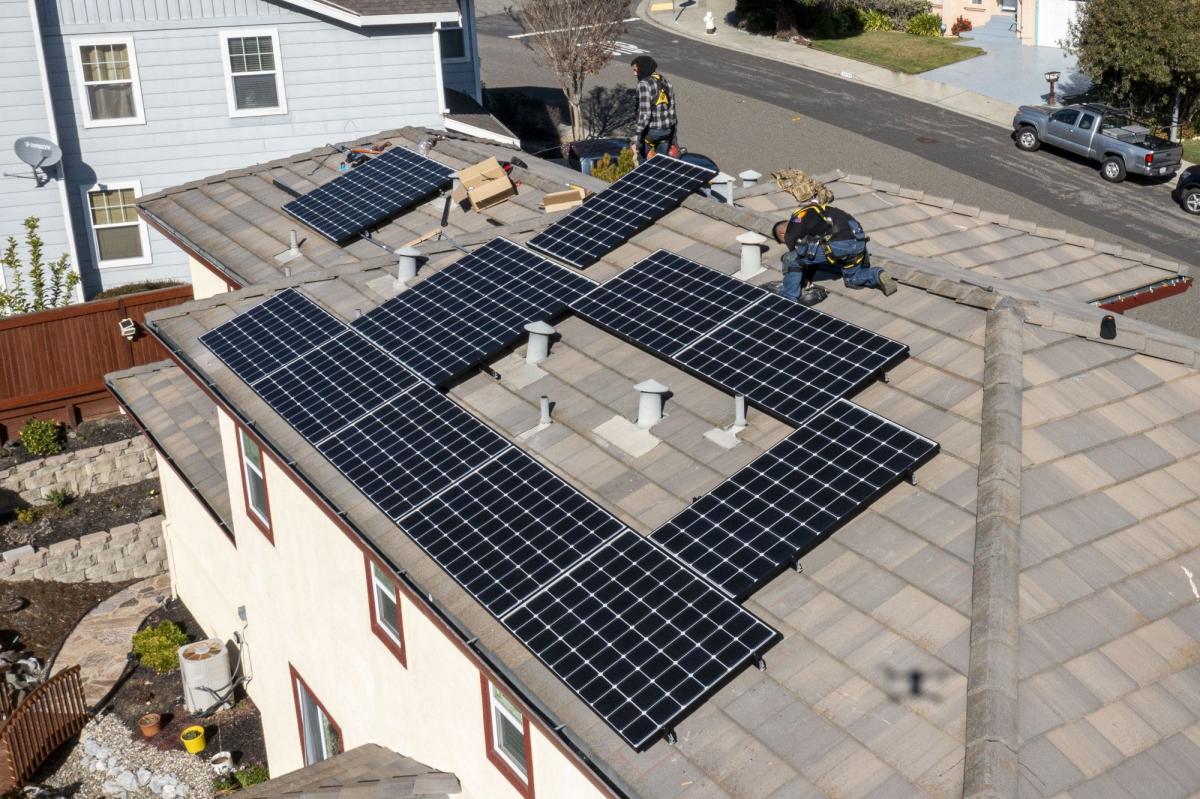
(Bloomberg) — California will sharply reduce the incentive that encouraged more than a million homeowners and businesses to install rooftop solar panels and cemented the Golden State as a green energy pioneer.
Most Read from Bloomberg
State regulators unanimously voted Thursday to cut the compensation homeowners get for their systems’ excess electricity by about 75%. The existing program pays solar customers the full retail electricity price for that excess power, a perk that some state officials say disproportionately hurts low-income residents who are less likely to own solar panels. The change won’t go into effect until April and won’t impact existing rooftop solar customers.
“This decision is more equitable than the status quo,” said Alice Reynolds, president of the California Public Utilities Commission who is Governor Gavin Newsom’s former energy advisor and was appointed to the PUC by the governor. She said there was a need to reduce rising power rates from the rooftop subsidy and prod more solar users to install batteries.
The move is a blow to rooftop installers and financiers — and risks slowing the growth of an industry that Newsom calls “essential to California’s future” to meet the state’s ambitious goal to becoming carbon neutral by 2045. It also marks a significant shift in policy for a state that takes pride in being at the vanguard of the energy transition, with implications that could reverberate well beyond California’s borders. The program has been a key driver for several solar installers and financing companies, including SolarCity, which Tesla Inc. acquired in 2016, as well as Sunrun Inc., SunPower Corp. and Sunnova Energy International Inc. About 1.5 million California homes and businesses have solar systems with a capacity of more than 12,000 megawatts of renewable power, or the equivalent of 12 nuclear reactors. Sunrun’s shares slipped almost 1% in late trading Thursday.
The vote came after regulators heard more than three hours of public comment with most speakers voicing opposition to the cut, saying it would run counter to the state’s climate goals. The commissioners defended their decision and said they weren’t biased in favor of the utilities they’re tasked with regulating.
California is easily the biggest producer of rooftop solar power — thanks to the program the state adopted more than two decades ago, which ultimately ushered rooftop systems into the mainstream. This year, the Golden State will account for about one-third of all US residential capacity installed, according to Pol Lezcano, an analyst at BloombergNEF.
Read: Fight over solar subsidy tests California’s climate commitment
Utilities — along with some consumer groups — say customers with rooftop systems have been able to reduce their bills to the point where they don’t pay their fair share of costs of maintaining the grid, which then fall on non-solar customers, driving up their collective utility bills to the tune of about $4.6 billion annually.
Utilities said Thursday’s vote didn’t go far enough in fixing this cost shift. “This final decision was a missed opportunity that will prolong the harm to low-income Californians and renters for decades to come,” said Kathy Fairbanks, spokesperson for Affordable Clean Energy for All, a utility-backed group that includes labor, business and community organizations.
California officials have grown increasingly concerned about soaring electricity bills. Rates have increased by about 25% since 2017, according to government data, as utilities including PG&E Corp. pass along billions of dollars in costs from hardening the grid in their territory to prevent catastrophic wildfires and making other infrastructure improvements.
In addition to reducing payments for selling excess power, the plan is intended to encourage new solar customers to get batteries. Under the new payment structure, the CPUC will adopt a variable pricing model, allowing utilities to pay homeowners more for their energy surplus during periods of grid stress, and less when there is ample power. Battery storage can help California ease potential power shortages on hot summer evenings when demand for electricity is high.
The decision garnered sharp pushback from solar companies. “It is a dark day in California when the utility regulators try to block out the sun,” said Bernadette Del Chiaro, executive director of the California Solar & Storage Association.
(Updates with comments from a utility-backed group and solar industry trade group.)
Most Read from Bloomberg Businessweek
©2022 Bloomberg L.P.




